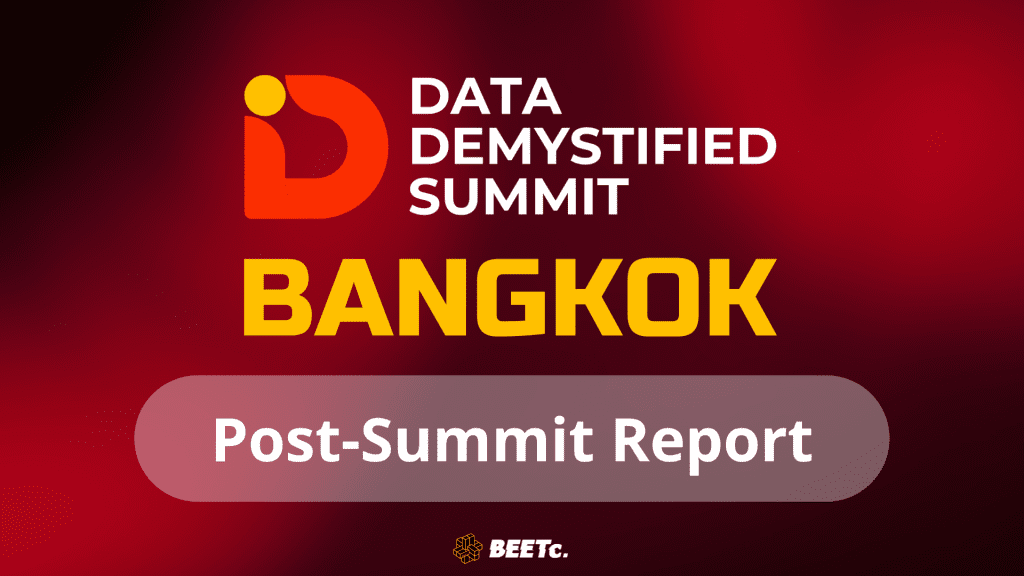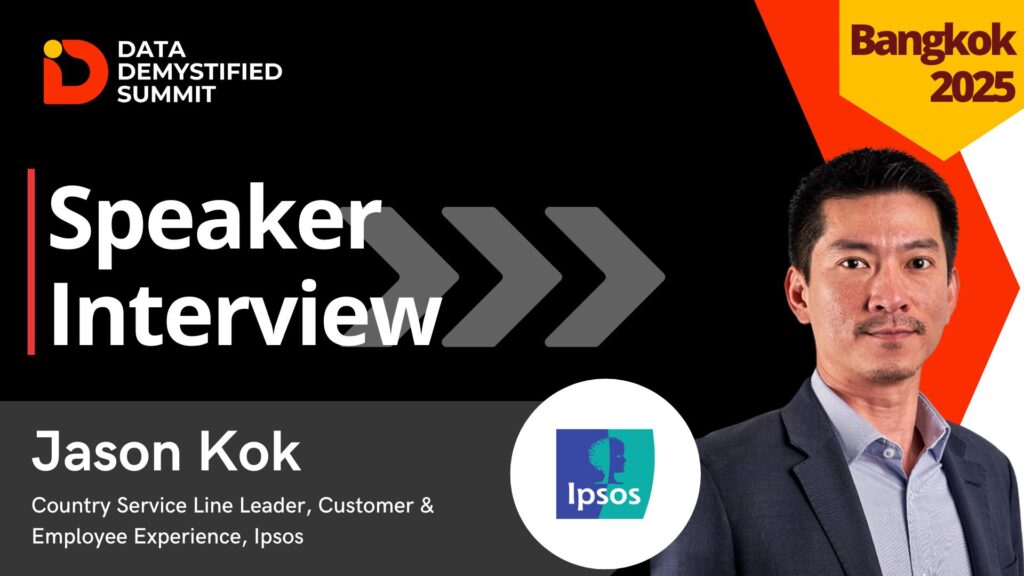
Welcome Siddharth Vijay, AVP-Engineering at Baazi Games, sharing his insights on Data, AI, & Analytics shaping the gaming industry in Data Demystified Thoughts series.
How do you describe your job to a 5-year-old?
Imagine you’re in charge of a group of people who make cool things like toys, games, or fun apps. My job is to help everyone work together to build these things, make sure they have the tools they need, and help them fix any problems they might have. I also help decide what we should build next to ensure everyone is having fun and everything works well.
What excites you most about data, data analytics, or data technology, and why?
What excites me most about data, data analytics, and data technology is the power to uncover hidden insights and make informed decisions. Data has the ability to reveal patterns, trends, and opportunities that might otherwise go unnoticed. The thrill comes from turning raw numbers into meaningful stories that can drive innovation, improve processes, and solve complex problems.
The ever-evolving landscape of data technology also excites me. The possibilities are endless with advancements in machine learning, AI, and big data. It’s fascinating how data can be harnessed to predict future trends, personalise experiences, and even change the way industries operate.
Ultimately, it’s the potential to make a real impact—whether it’s optimising a business, improving healthcare outcomes, or creating smarter cities—that drives my passion for data.
How do you see the skill sets needed in the data science profession changing?
The skill sets in the data science profession are shifting towards deeper expertise in machine learning and AI, proficiency in big data technologies, and the integration of data engineering skills. There’s also a growing emphasis on MLOps for model deployment, ethical considerations, and strong data visualisation and communication skills. As technology advances, continuous learning and adaptability are essential to stay current in this rapidly evolving field.
What was your most successful or most challenging data analysis project?
One of my most challenging data analysis projects involved analysing user behaviour across multiple platforms to improve retention rates. It required integrating and cleaning a massive dataset and applying advanced machine learning models to predict user churn. The successful outcome led to actionable insights that significantly enhanced user retention strategies.
In what ways have you implemented advanced analytics to drive decision-making within your organisation? Can you share a specific use case where advanced analytics provided significant business value?
We implemented advanced analytics to optimise player engagement and retention. We identified patterns indicating potential churn by analysing gameplay data and using predictive models. We then tailored targeted promotions and personalised offers based on these insights, which significantly increased player retention and revenue.
How do you leverage big data visualisation to communicate insights effectively across different levels of the organisation? What tools and strategies have proven most effective for you? What are common mistakes to avoid in data visualisation?
To communicate insights effectively across different levels of the organisation, we leverage big data visualisation by using tools like Tableau to create interactive and easily understandable dashboards. We tailor the visualisations to the audience’s needs: high-level executive dashboards for strategic overviews and detailed reports for operational teams. Effective strategies include using clear, concise visualisations, providing actionable insights, and incorporating storytelling to highlight key findings and their implications for decision-making.
For data visualisation, we prefer Tableau due to its robust features, ease of use, and ability to create interactive and dynamic dashboards. It offers powerful data integration, real-time analytics, and extensive customisation options.
Common Mistakes to Avoid in Data Visualisation:
- Overloading with Information: Including too much data can overwhelm viewers. Focus on key insights and use clear, concise visuals.
- Misleading Charts: Ensure that visualisations accurately represent the data. Avoid manipulative scales or misleading axes.
- Lack of Context: Provide necessary context and explanations to help viewers understand the significance of the data.
- Inconsistent Design: Use consistent colors, fonts, and styles to make the visualisations easier to interpret and follow.
- Ignoring the Audience: Tailor visualisations to the audience’s level of expertise and needs, whether they are executives, analysts, or operational teams.
How have you integrated machine learning or deep learning techniques into your data analytics workflow? Can you discuss a successful application and its impact on your business?
We integrated machine learning techniques into our analytics workflow by using predictive models to forecast player churn. By analysing player behaviour patterns, we developed models that identified at-risk users and allowed us to implement targeted retention strategies. This led to a significant reduction in churn rates and increased overall player engagement and revenue
What is the most effective use of technology you’ve seen in navigating today’s rapidly changing and diverse world?
The most effective use of technology in today’s rapidly changing world is the deployment of real-time data analytics and AI-powered insights. These technologies enable organisations to swiftly adapt to market shifts, optimise operations, and make data-driven decisions. For example, companies using AI for supply chain management can anticipate disruptions and adjust strategies in real time, maintaining resilience and efficiency despite global uncertainties.
What would your company use AI the most for?
AI would be used most to enhance player experience and operational efficiency. This includes personalising player recommendations, detecting and preventing fraudulent activities, and optimising game mechanics and strategies through predictive analytics. AI can also improve customer support with chatbots and automate data-driven decision-making to drive business growth and player engagement.
How do you balance experimenting with new technologies vs investing in current technologies that you already utilise?
Balance experimentation with new technologies by aligning them with strategic goals and managing risks through pilot projects. Invest in current technologies by continuously optimising and maintaining them while allocating resources to test innovative solutions. This ensures both current systems and new technologies receive appropriate attention and support.
What are the biggest challenges you face in data management within your organisation?
The biggest challenges in data management include:
- Data Integration: Combining data from disparate sources seamlessly.
- Data Quality: Ensuring accuracy, consistency, and reliability of data.
- Scalability: Handling growing volumes of data efficiently.
- Security and Compliance: Protecting sensitive data and adhering to regulations.
- Accessibility: Making data easily accessible to authorised users without compromising security.
What key elements do you consider when developing a data strategy? What role do you see data playing in your company’s future growth?
When developing a data strategy, key elements include:
- Defining clear objectives.
- Ensuring data quality and governance.
- Integrating data sources.
- Establishing robust security measures.
Data will play a crucial role in driving future growth by enabling informed decision-making, optimising operations, and uncovering new business opportunities.
How do you ensure effective data governance within your organisation, and what strategies do you use to balance control with accessibility for your data assets?
To ensure effective data governance, I establish clear policies, define roles and responsibilities, and implement access controls. Balancing control with accessibility involves using role-based permissions and regularly reviewing data access to ensure it aligns with security needs and business requirements.
How is AI helping your organisation manage and process vast amounts of data? Can you provide an example of how AI has improved your data management processes?
AI helps manage and process vast amounts of data by automating data cleaning, providing advanced analytics, and generating predictive insights. For example, we use AI for anomaly detection in real-time transaction data, which identifies potential fraud or system issues more efficiently than manual processes. This has significantly improved our ability to maintain data integrity and respond swiftly to anomalies.
How do you see generative AI and large language models transforming your industry? Have you implemented any generative AI solutions, and if so, what outcomes have you seen?
Generative AI and large language models are transforming our industry by enabling advanced content generation, personalised user experiences, and improved automation. We’ve implemented generative AI to create dynamic marketing content, increasing engagement and more efficient customer interactions. To stay ahead, our organisation plans to invest in ongoing research, adopt emerging technologies, and continuously update our AI strategies to leverage the latest innovations and maintain competitive advantage.
How do you keep abreast of all the latest technology out there?
I stay updated on the latest technology by regularly reading industry news, following tech blogs and forums, attending webinars and conferences, and participating in relevant online communities. I also engage with professional networks and continue learning through courses and certifications.
Any fun facts about yourself that you want to share?
I’m a huge fan of learning about new technologies and trends, and I love finding creative ways to apply them in real-world scenarios. I also enjoy playing around with AI tools to see what interesting results I can generate. If you have any unique tech or AI trivia, I’d love to hear it!
What’s the best advice someone has ever given you?
The best advice I’ve received is: “Focus on solving problems, not just on using tools.” It reminds me to prioritise understanding and addressing core issues, rather than getting too caught up in the latest technologies or methods. This perspective helps ensure that solutions are practical and impactful.
Are there any questions you’d like to ask to other Data enthusiasts?
Absolutely! Here are a few questions I’d love to ask fellow data enthusiasts:
- What emerging data trends or technologies are you most excited about, and why?
- How do you handle challenges related to data privacy and ethics in your projects?
- Can you share a project where data visualisation made a significant impact on decision-making?
- What strategies do you use to ensure data quality and integrity in your work?
- How do you stay motivated and inspired in the ever-evolving field of data science?
A big thank you to Siddharth Vijay, AVP-Engineering at Baazi Games, sharing his insights on Data, AI, & Analytics shaping the gaming industry in Data Demystified Thoughts series. If you want to connect with Siddharth after reading his Data Demystified Thoughts, please reach out via his LinkedIn Profile!
See more Data Demystified Thoughts interview pieces here!
Last updated: August 2024







